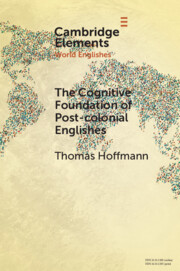Element contents
The Cognitive Foundation of Post-colonial Englishes
Published online by Cambridge University Press: 10 November 2021
Summary
Keywords
- Type
- Element
- Information
- Series: Elements in World EnglishesOnline ISBN: 9781108909730Publisher: Cambridge University PressPrint publication: 09 December 2021
References
- 11
- Cited by

